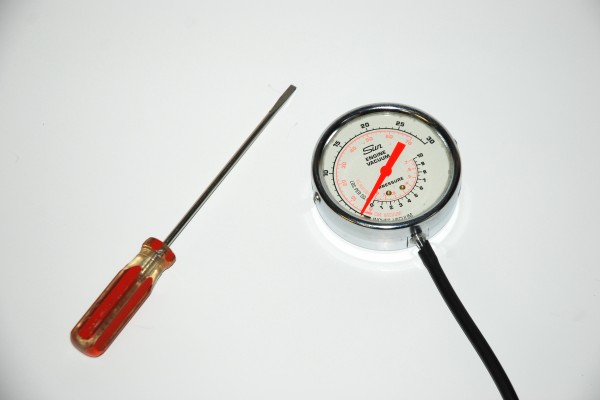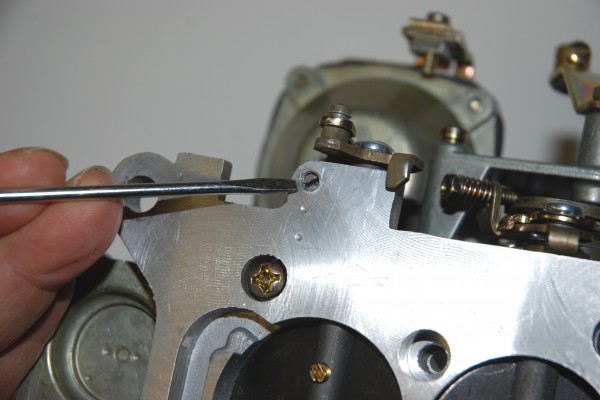Holley four-barrel carburetors are probably the most common high performance fuel mixing devices on the planet. Given the sheer numbers of carburetors made since the 1950s, you know they work. If there is a fly in the Holley ointment, it’s setting up the idle. Since Holleys are so easy to adjust, it’s also easy to adjust them totally wrong. People will get the idle settings wrong, then blame the carburetor when it doesn’t work properly. That’s a big mistake.
In reality, setting the basic idle on a Holley isn’t difficult. We’ll show you how to do it on both vacuum secondary and double pumper models. What works on this pair of carburetors will work on your high performance Holley, too.
We’ll take you through the entire process in the slide show below:










[…] the transition circuit. Closing the primaries and opening up the secondaries should help a lot. https://www.onallcylinders.com/2013/0…y-carburetors/ Last edited by chillininnh; Today at 07:24 […]
I wish I could read at 500 words a minute. Useless trying to read your information.
There’s nothing wrong with the author’s information, it’s perfect in fact.
YOU need to read each page individually rather than trying to read it while playing the slideshow.
When you said to open the secondary throttle stop 1 1/2 turns that seems like a lot. I did it and the car idled at 2500 rpm and no change when I backed the main idle screw out. Now off with the carb. again tomorrow for a little more trial and error.
A lot of racers take a 1/16 drill bit and drill a hole in each primary butterfly for starters. This raises your idle without uncovering too much transfer slot. Remember, when you adjust the secondaries to raise their idle, you are uncovering their transfer slots too. If a 1/16 drill bit is too small you can progress larger.
Only do that “if” you very low idle vacuum under 9 and you have tuned the ifr and or the idle bleeds then if you can get enough idle air then drill the blades
[…] the position you suggest, which is also a position where they physically can't be adjusted to.. Quick Tech: How to Properly Set up the Idle on Holley Carburetors – OnAllCylinders 3rd image caption "Most carburetors will have the secondary butterflies adjusted with a small […]
[…] then at least carb. and intake manifold gaskets are pk. Was any of the stuff done in this article? How to Properly Set up the Idle on Holley Carburetors 96 XL 5.0 E4OD, Man Xfer/Hubs USN & DoD Planner (ret) THANKS to ALL WHO SERVE! my […]
[…] write up from 2013, but it is still valid and covers a lot of people here have said in the past. How to Properly Set up the Idle on Holley Carburetors 1969 Shelby GT350 Hertz rebuild Gallery Delivered to Ball Ford in Miami Florida, purchased […]
With a high overlap isn’t a stall converter a remedy for excessive high idle paired to an automatic transmission?
Check at idle vac reading, if vac lower than power valve value,carb will put extra fuel in. Causing rough idle or too rich of a idle. if this is the case, put a lower power valve in. Will purr like a cat.
I’m running two Holley 4160 (450’s) and they don’t have a manifold vacuum port, what else can i do to see if it is running correctly since i can’t hook up a vacuum gauge?
Drill a manifold runner and tap it for a vacuum source.
this site is friken lame its impossible to read it the arthor needs to leave instructions on how to read it ive tried everything somebody please delete this page
You just hit next at the top of the page. After reading scroll bk up and hit next. Uhhh lol
Thanks ,it is very good information,,and trully helpfull
Perfect! Just what I was looking for. So simple its dangerous.
If The car has set for five years not running at all, should I rebuild?
I have a big cam in a sb Chevy with a summit electric vacuum pump works great , for booster, only 5lbs of vac at ideal, after warm up not cold ideal goes to 1500 and stays there , I think secondary’s are dropping open because lose of vacuum at ideal what’s the fix for this or do u think it’s something else ???thanks for your time,, Garry !
Does this also apply to spreadbore volleys with mechanical secomdaries? Been having trouble adjusting the idle on mine and Cant seem to find the exact info I’m looking for
My 4160 Holley does not have the secondary throttle stop screw installed. Do I need? I am running a high duration cam. Honestly don’t recall anymore what the duration is.
Exactly what I was looking for, thank you for the info!
I have a new Holley and primary circuit will not close enough for proper adj
Buy one of these brackets QFT-BR-67237 from summit racing to adjust the secondary throttle plate. Works like champ. About $20
I bought a new holley 850 dbl pump 4150 and with no choke but when started and warmed up it will not idle under 1000 rpms tried to set idle between 7 or 800 rpms but it will just die timing is set at 8°TDC so the question is do I need to adjust air mixture screws site glass both show half bubble or is carb pre tune at summit race